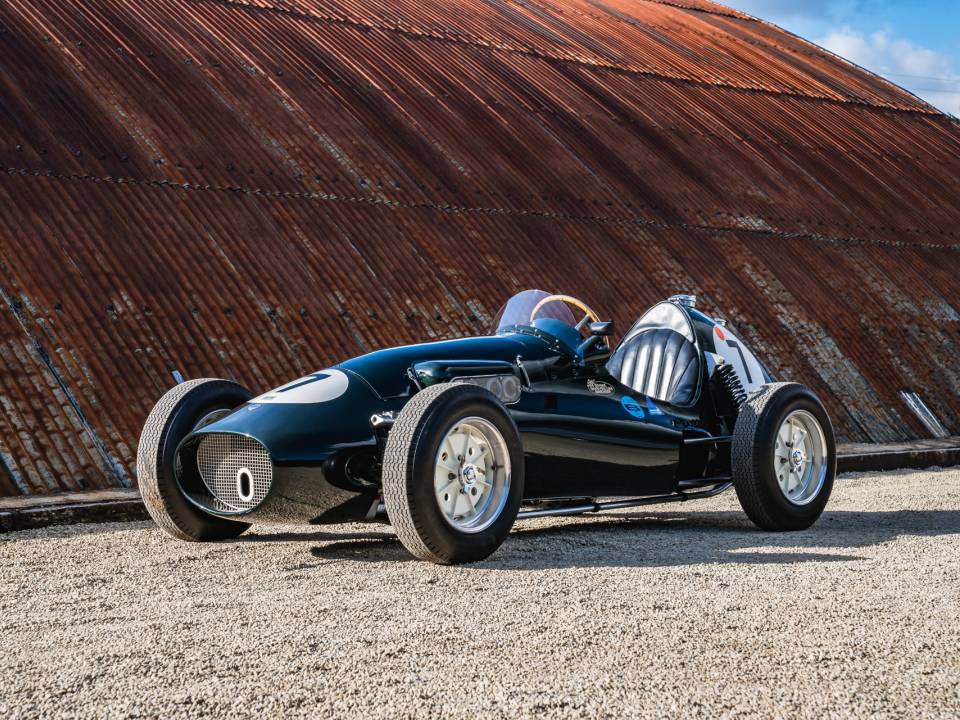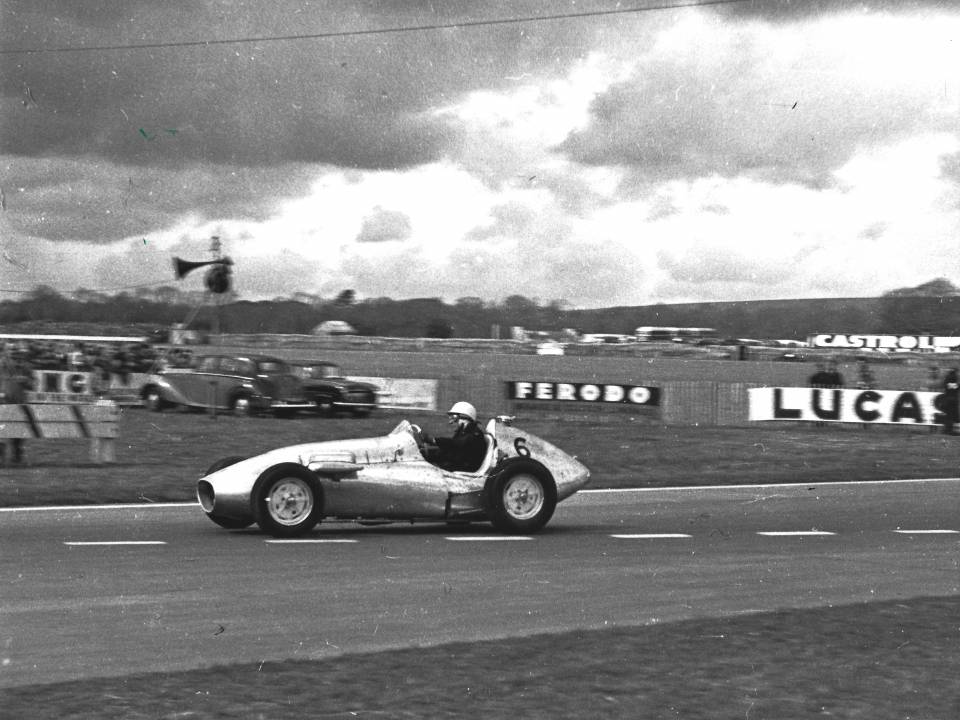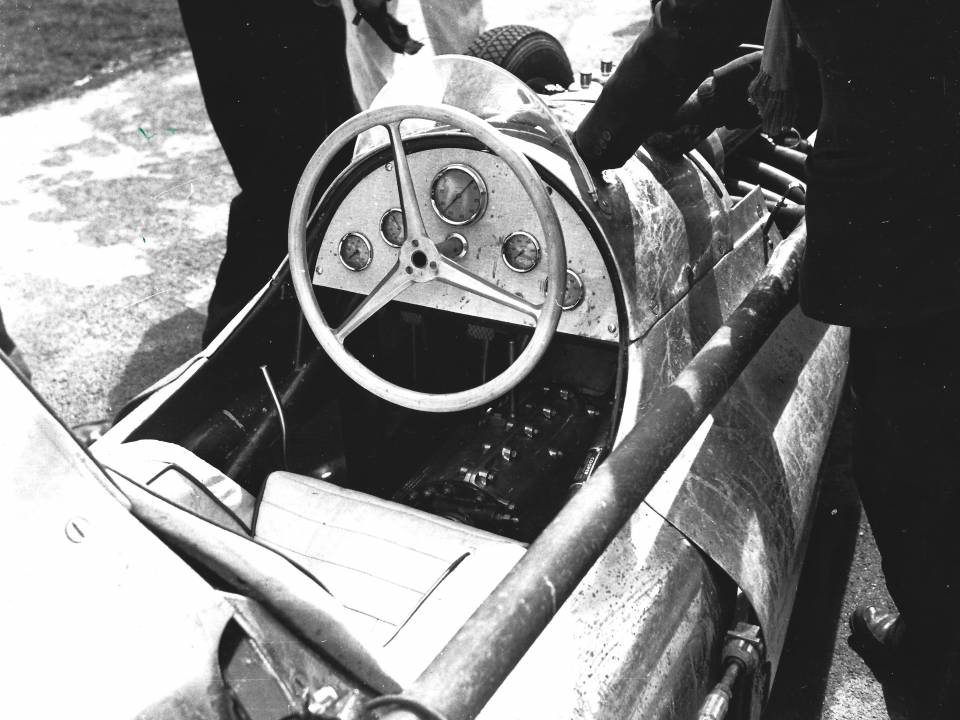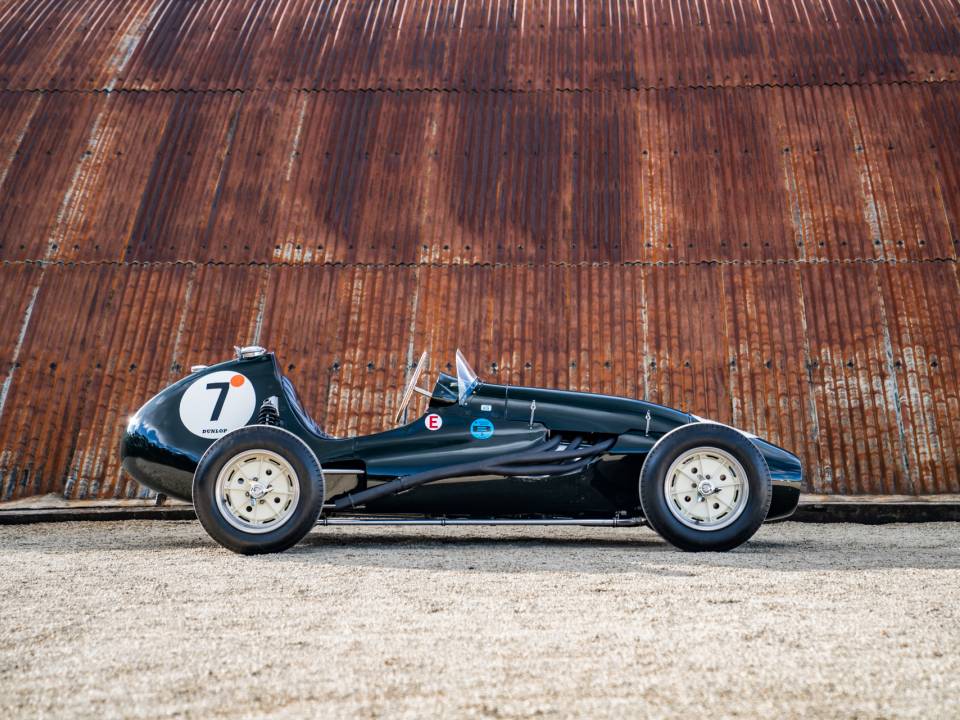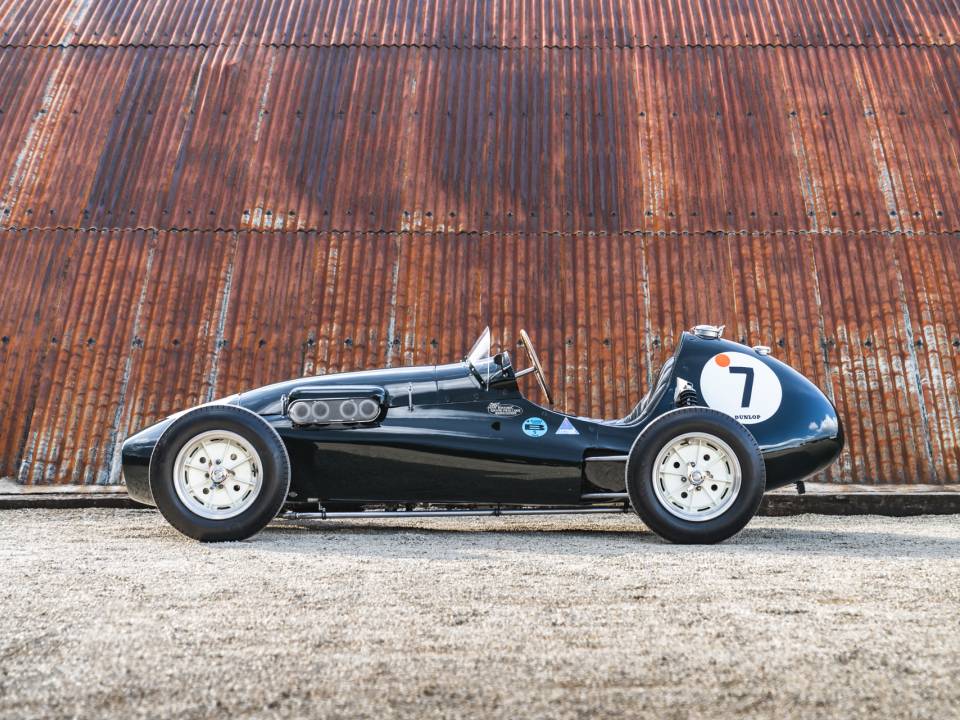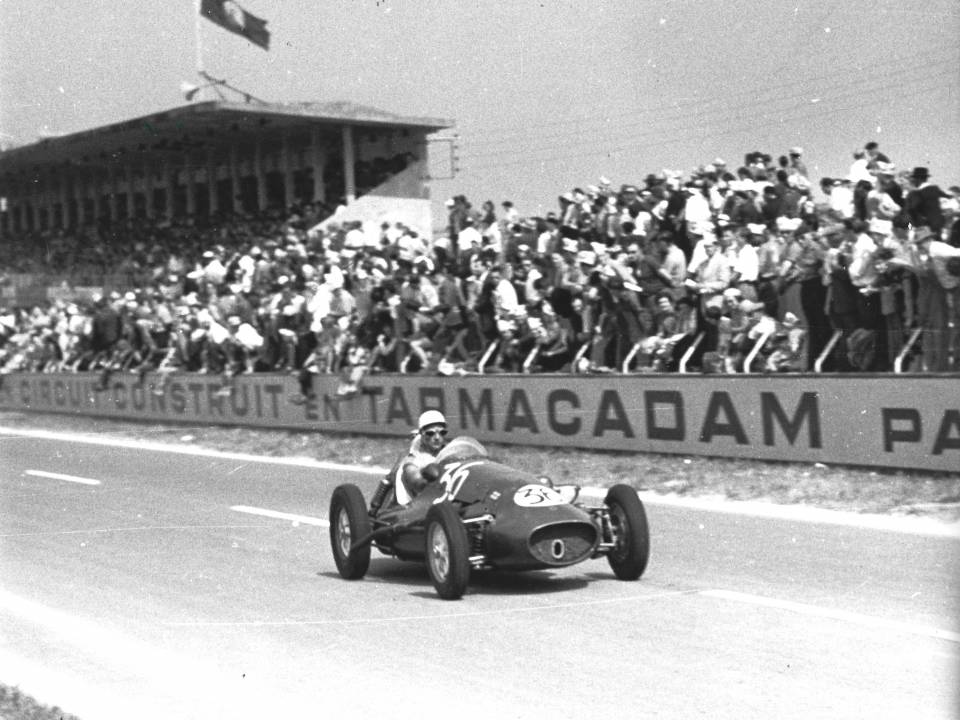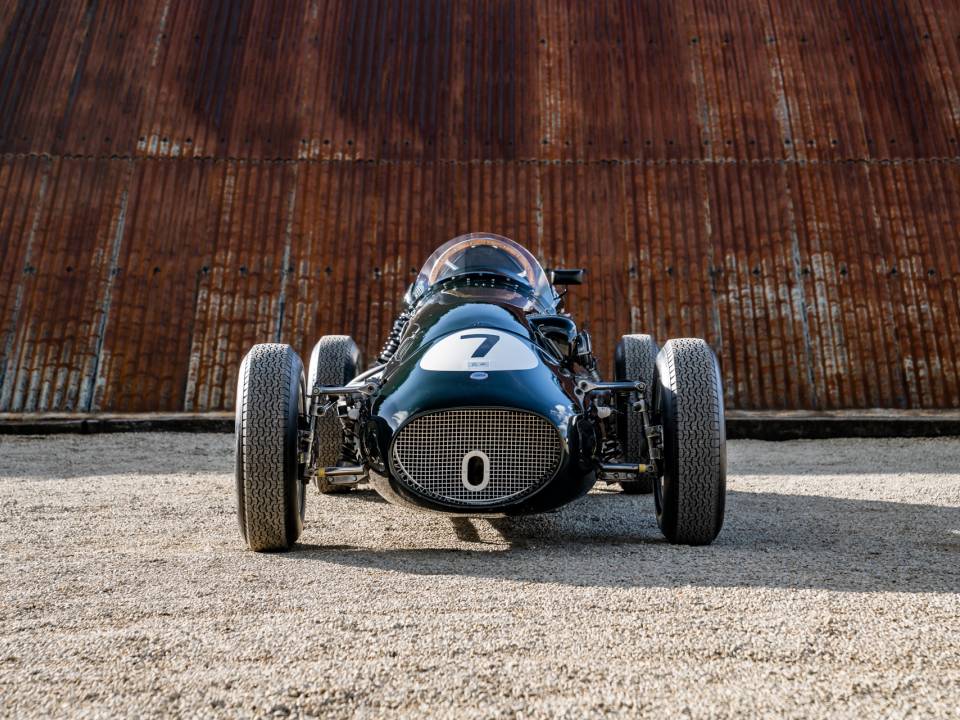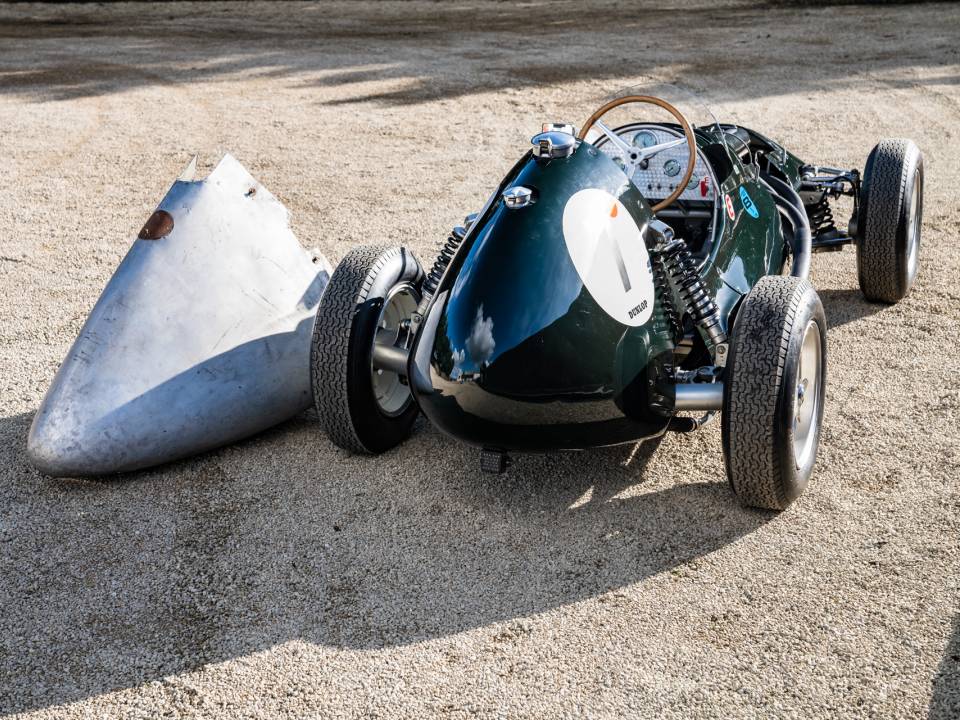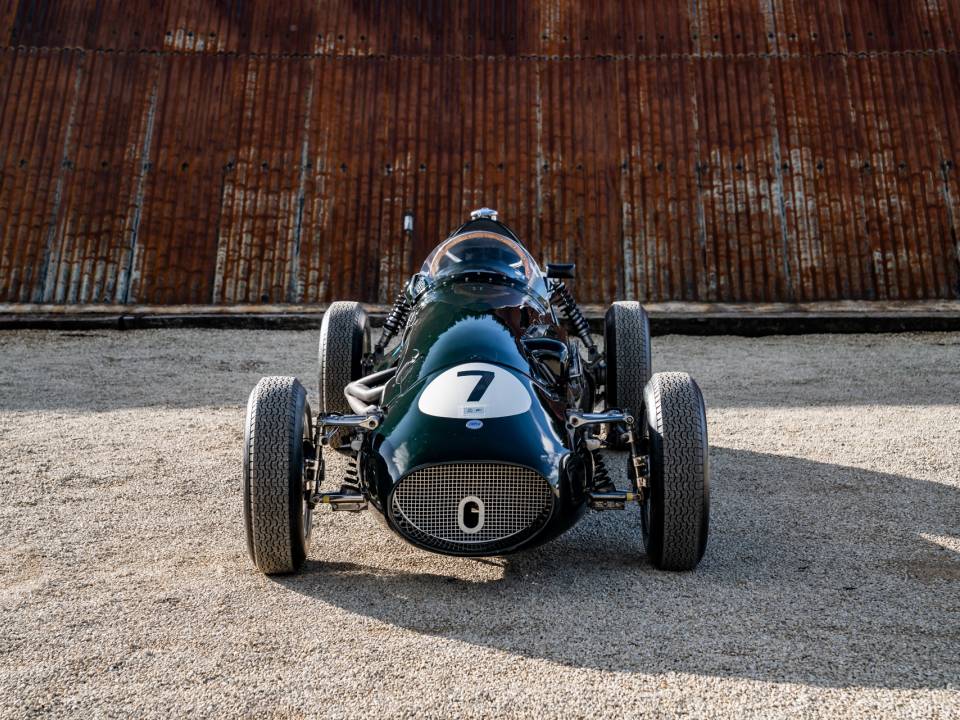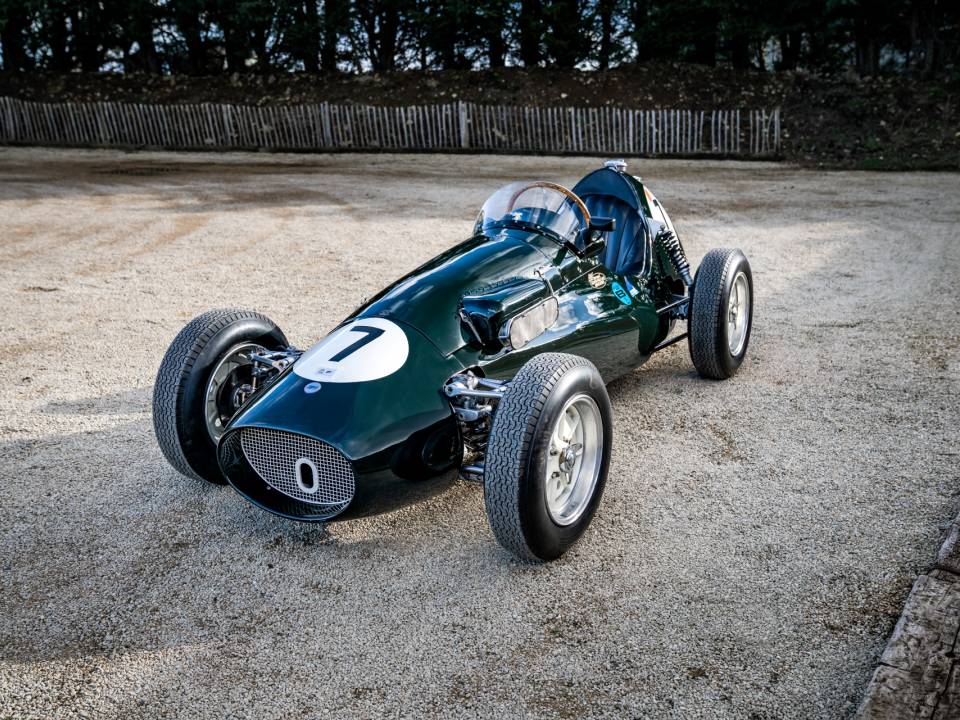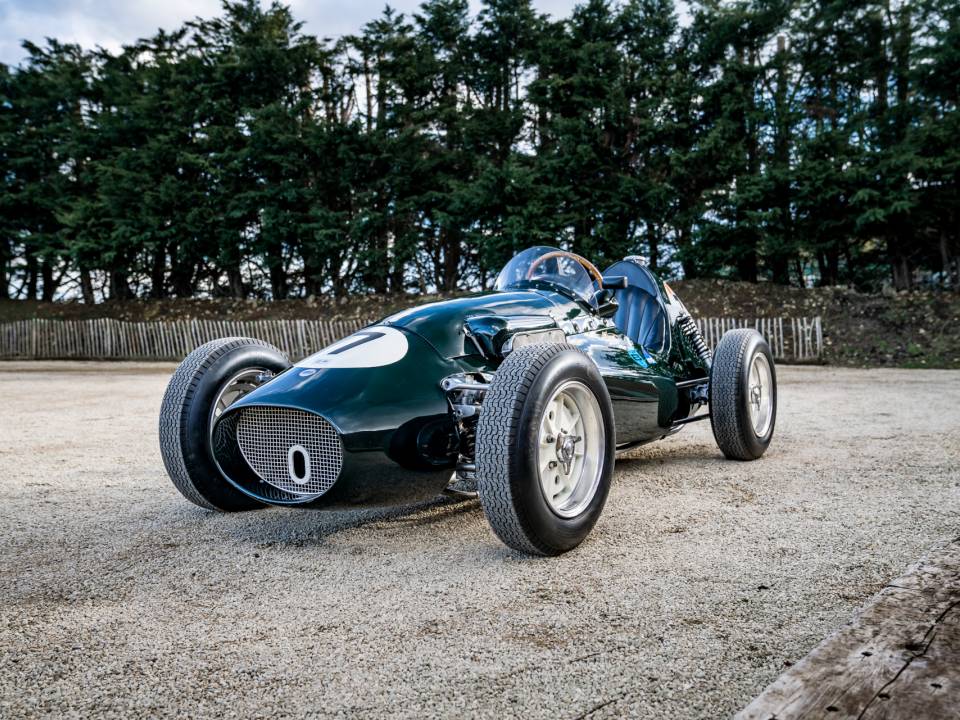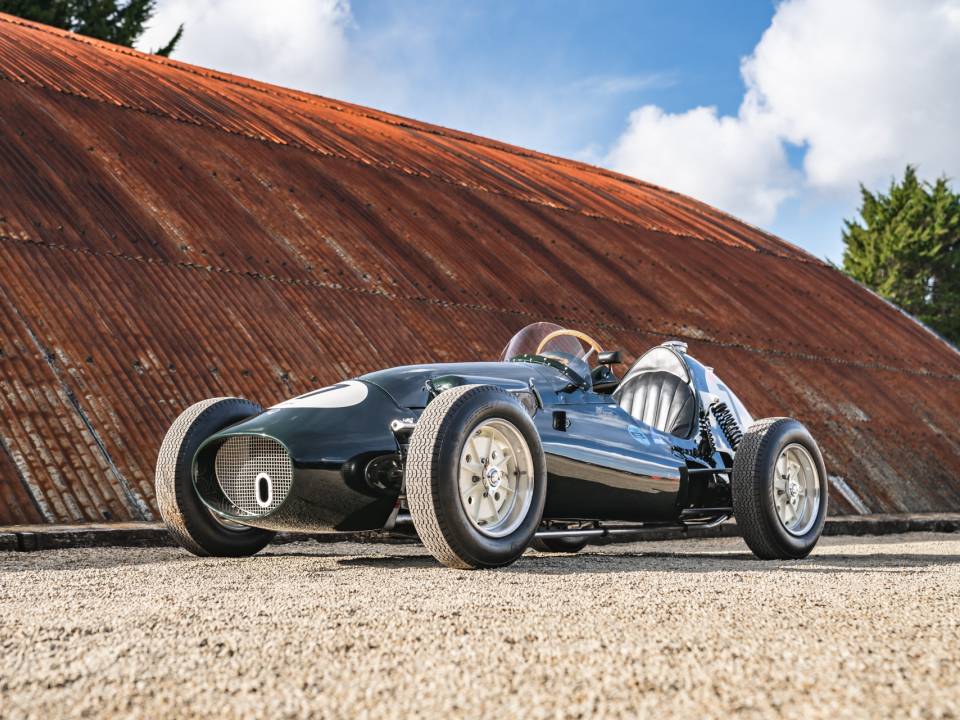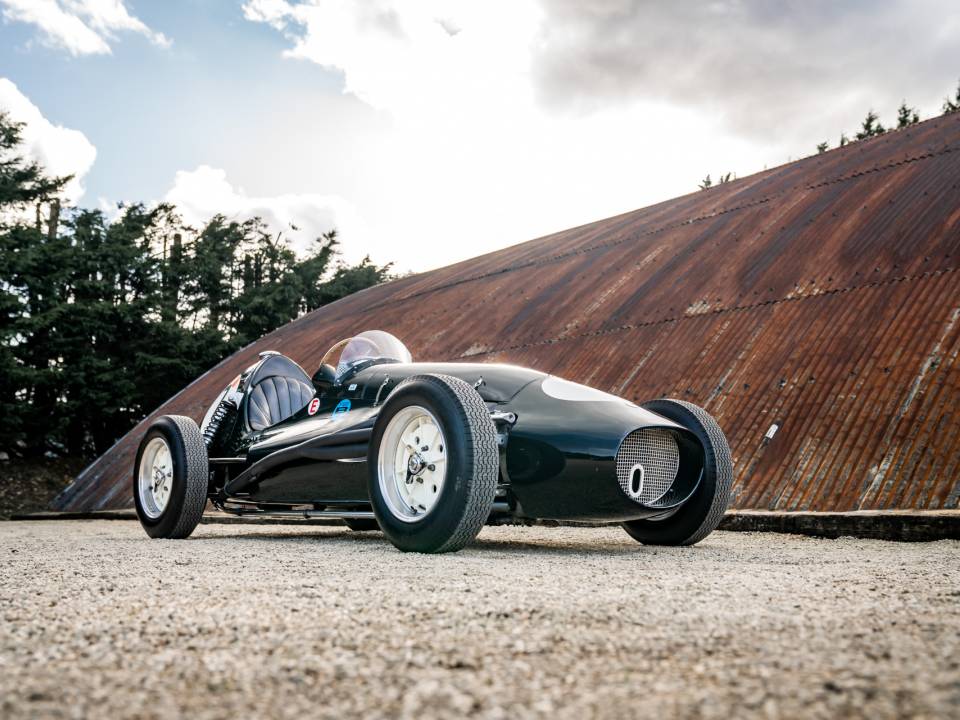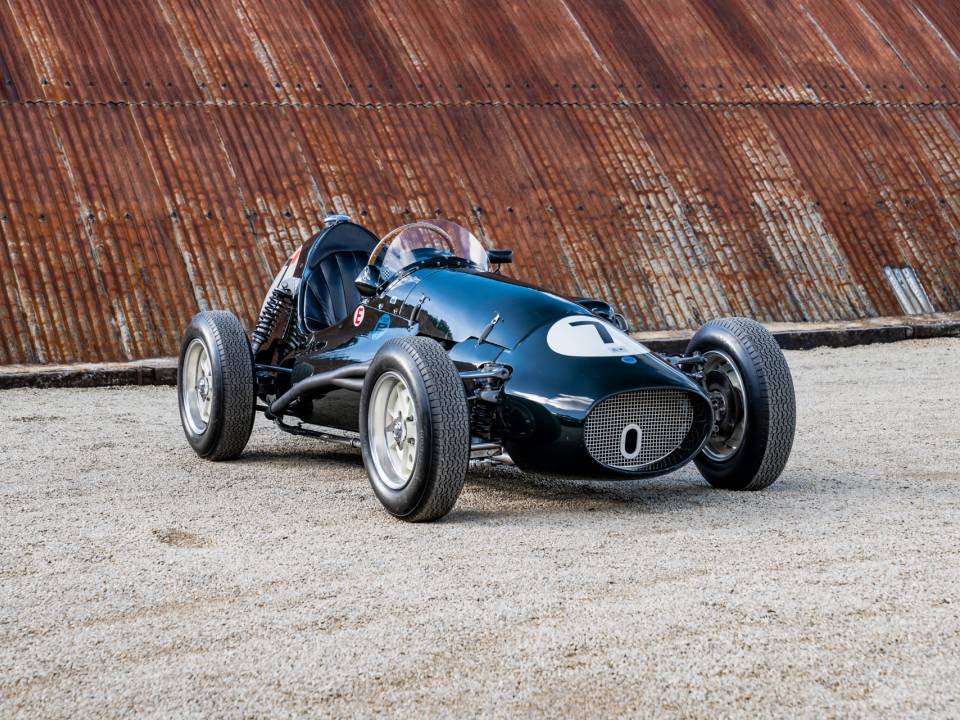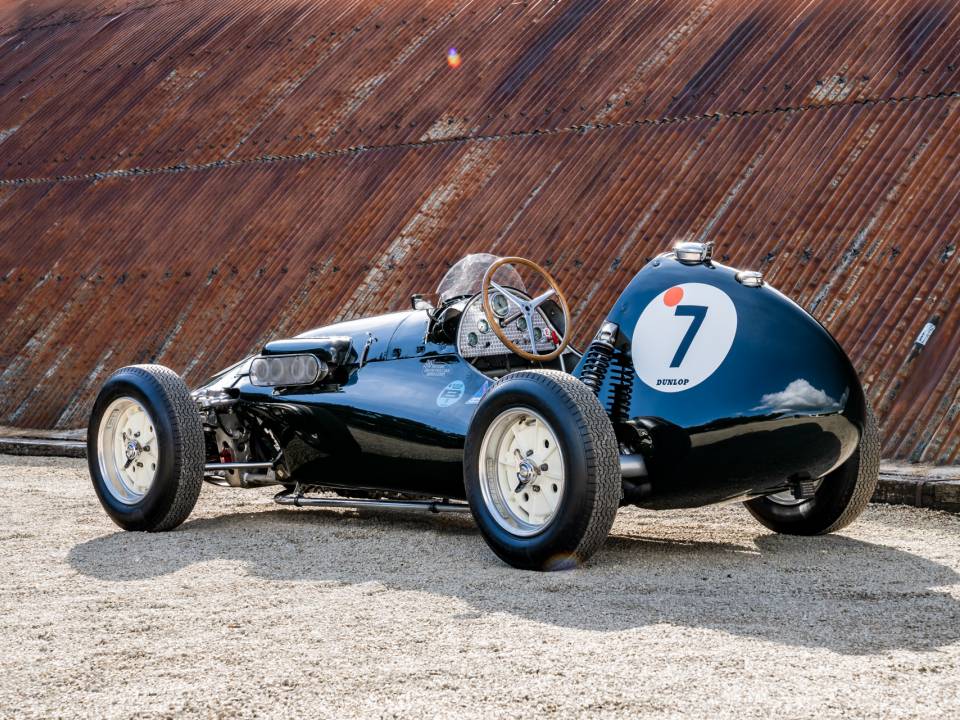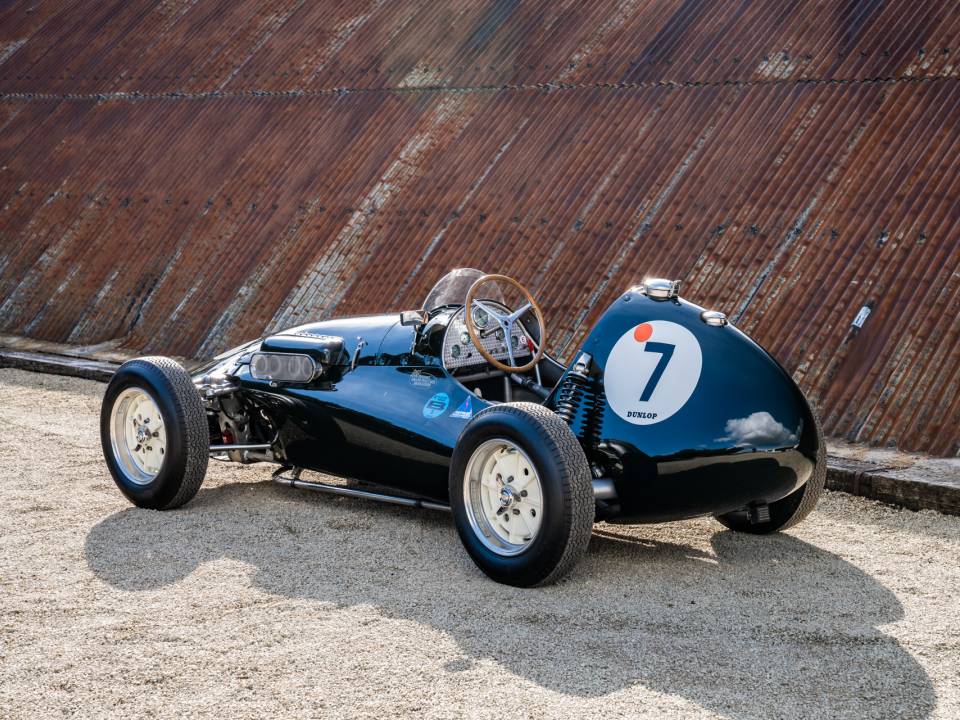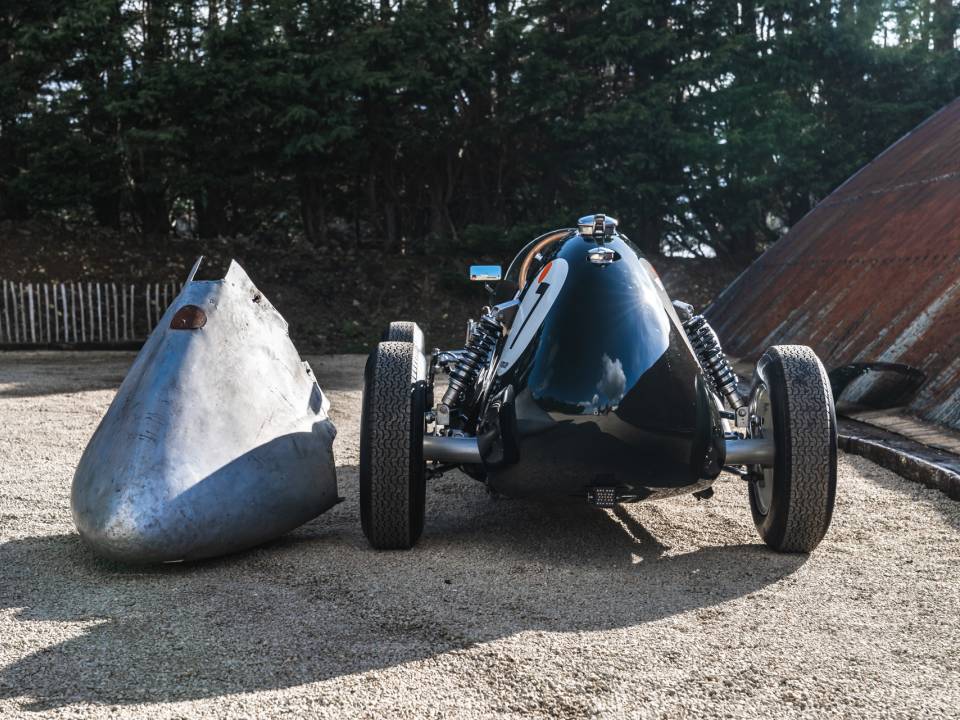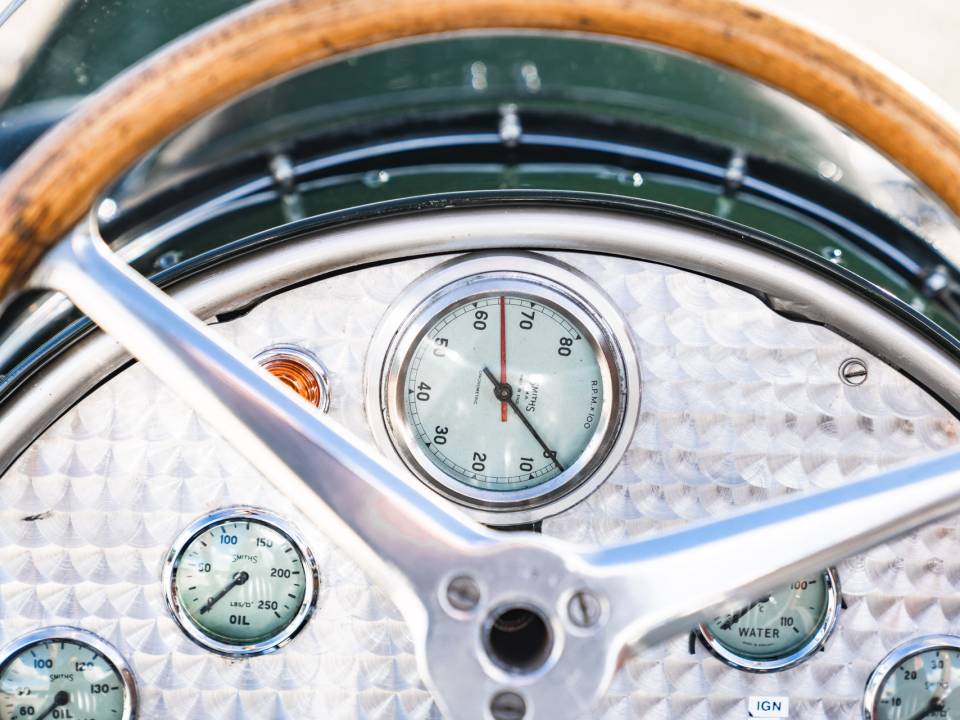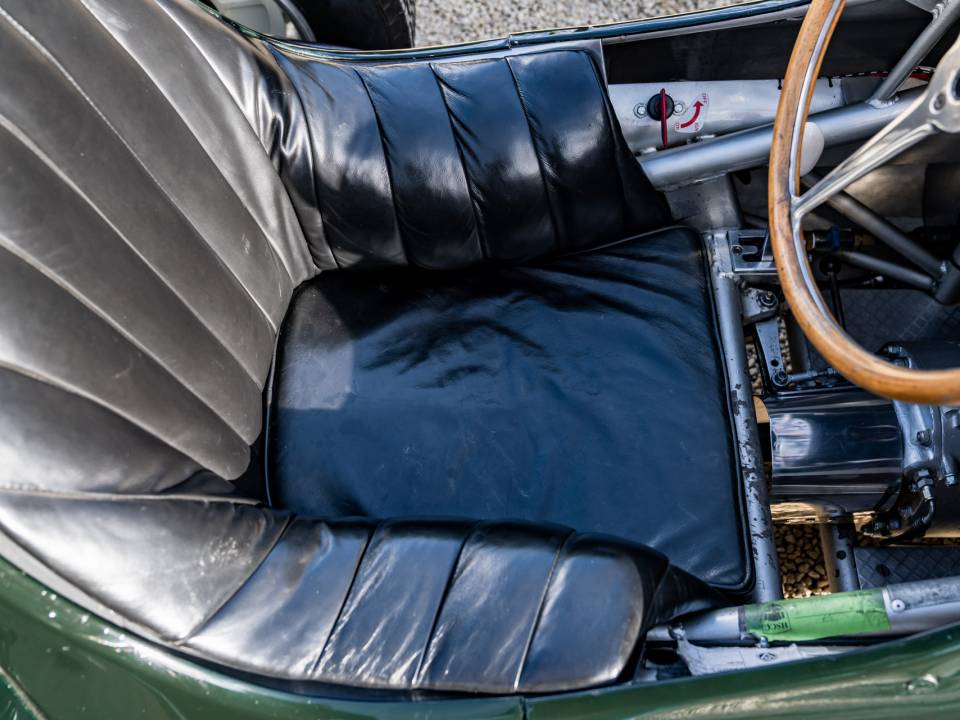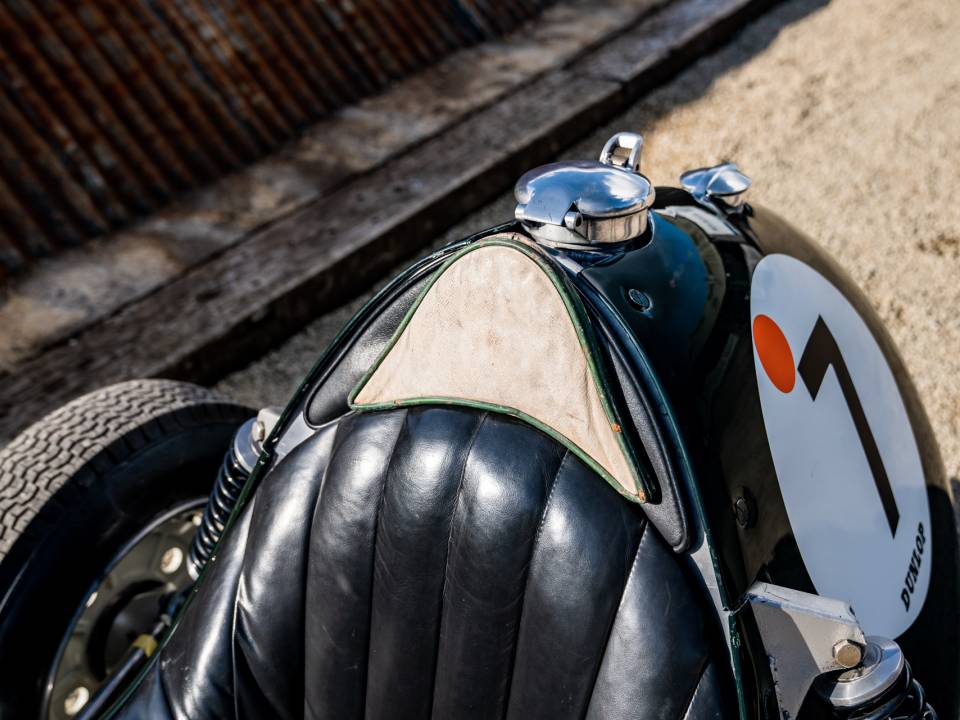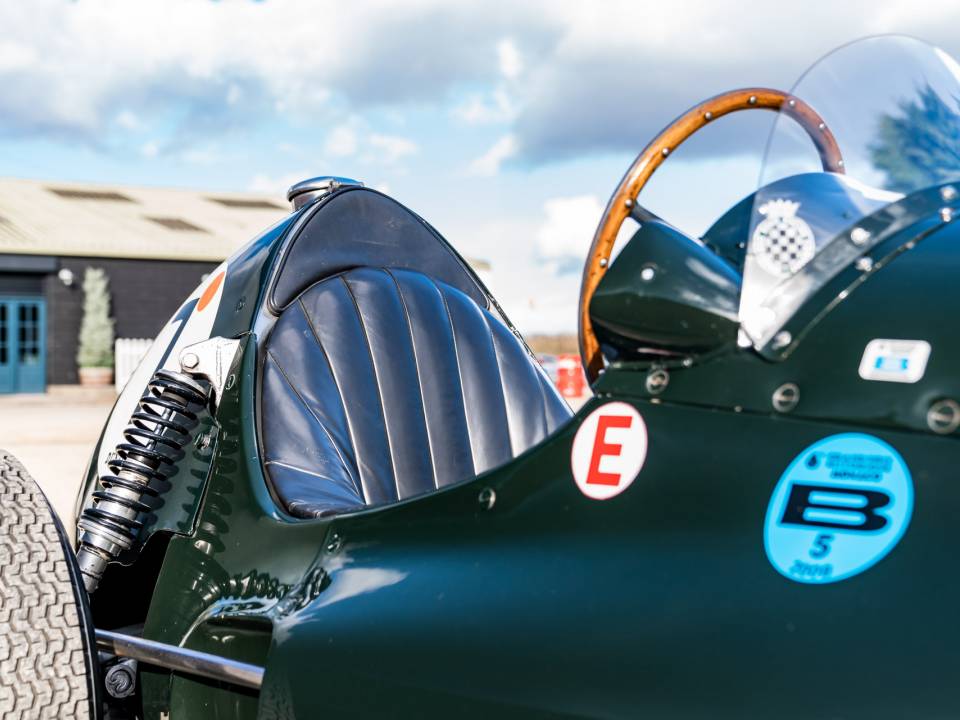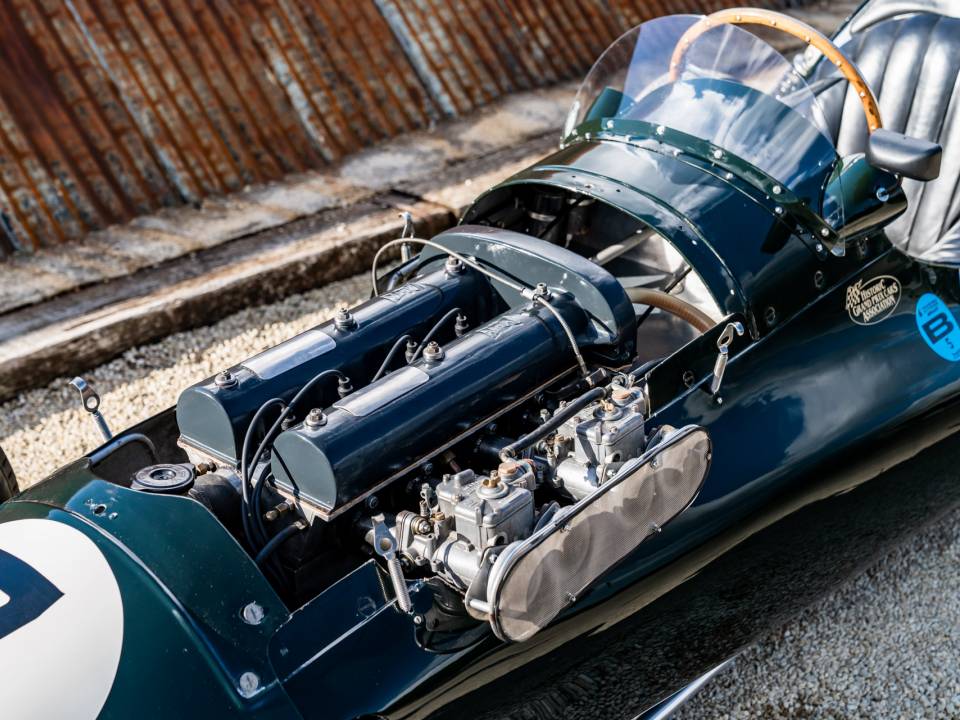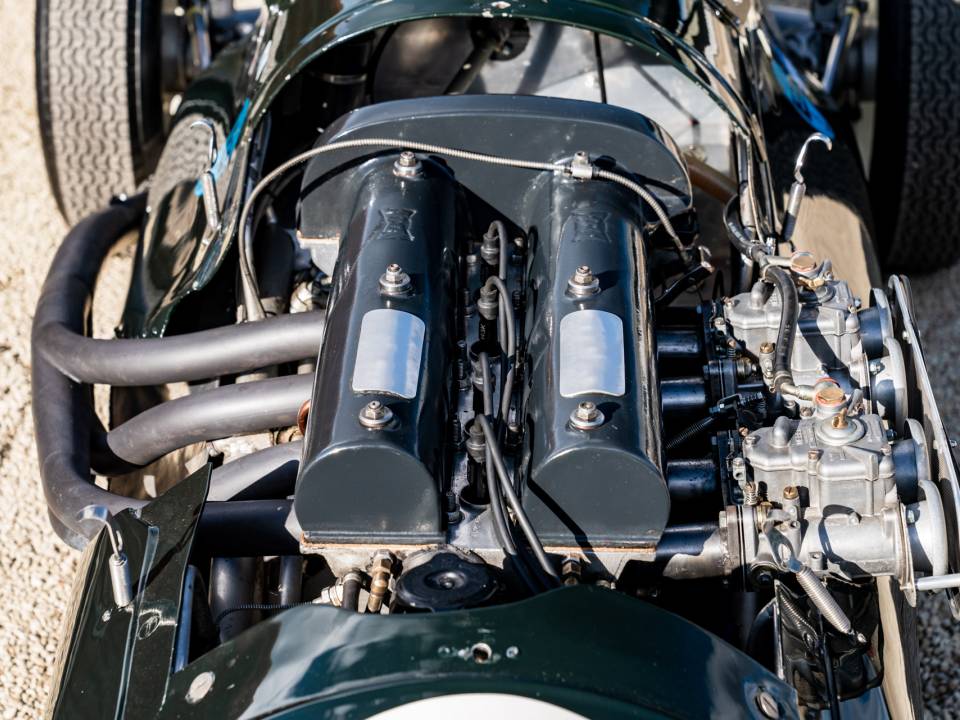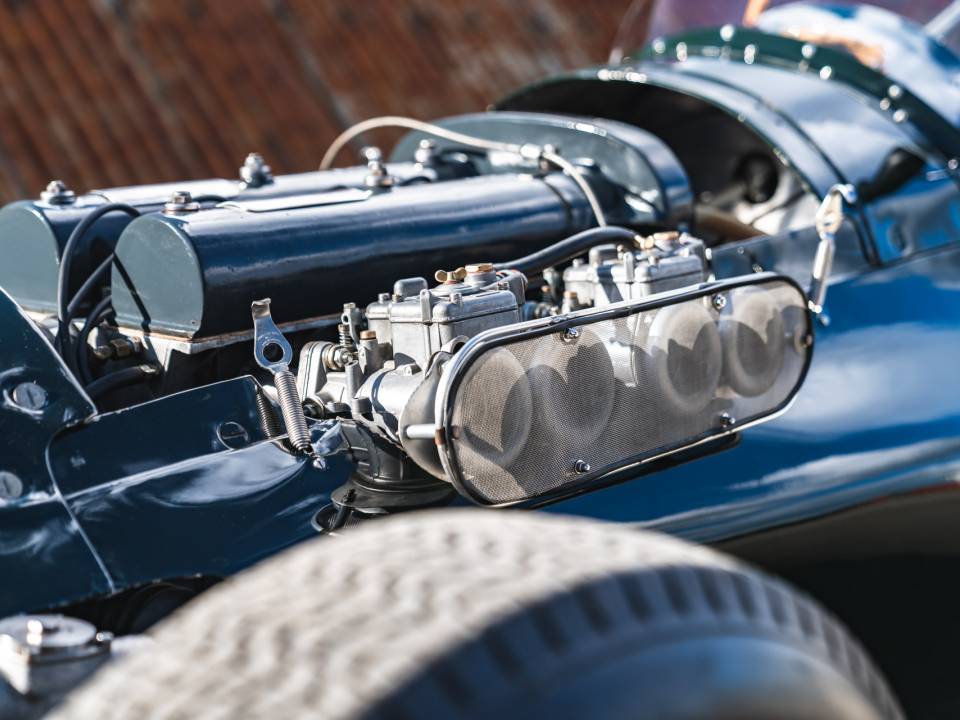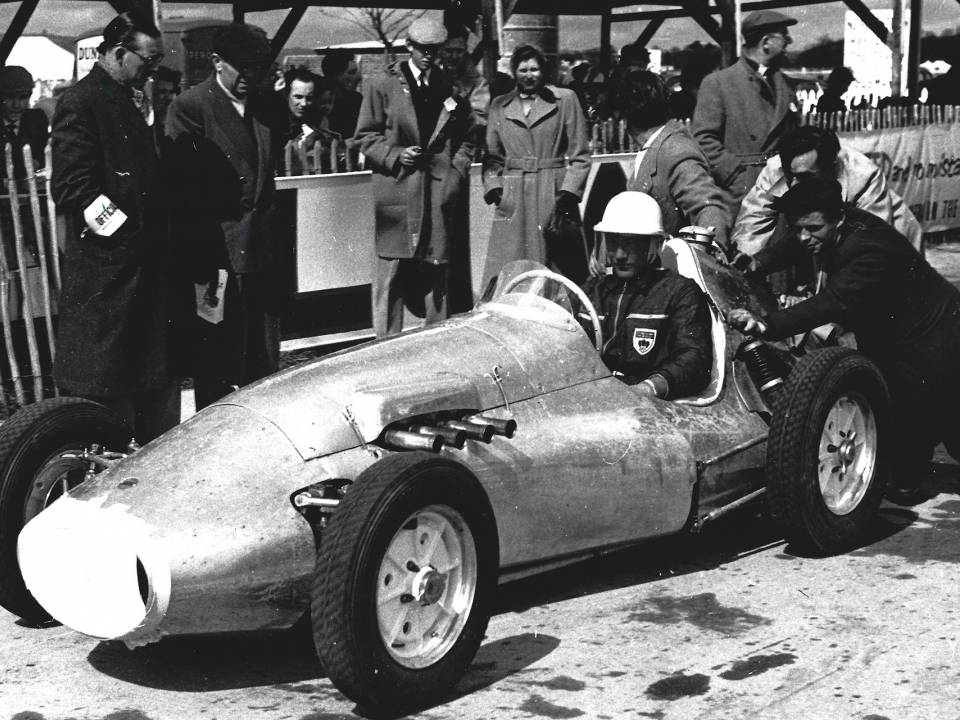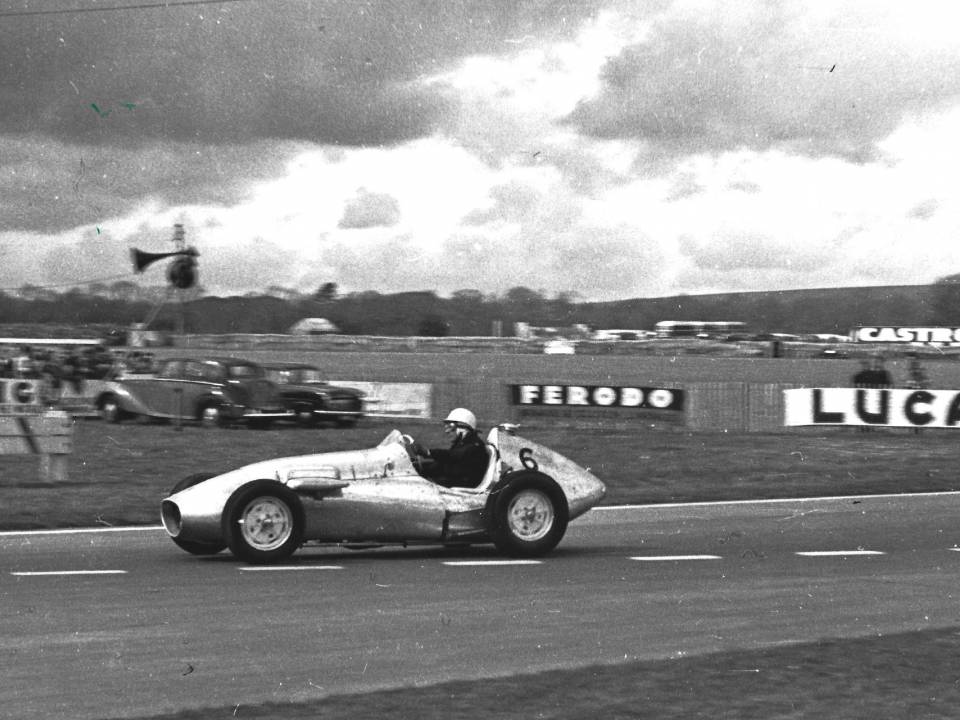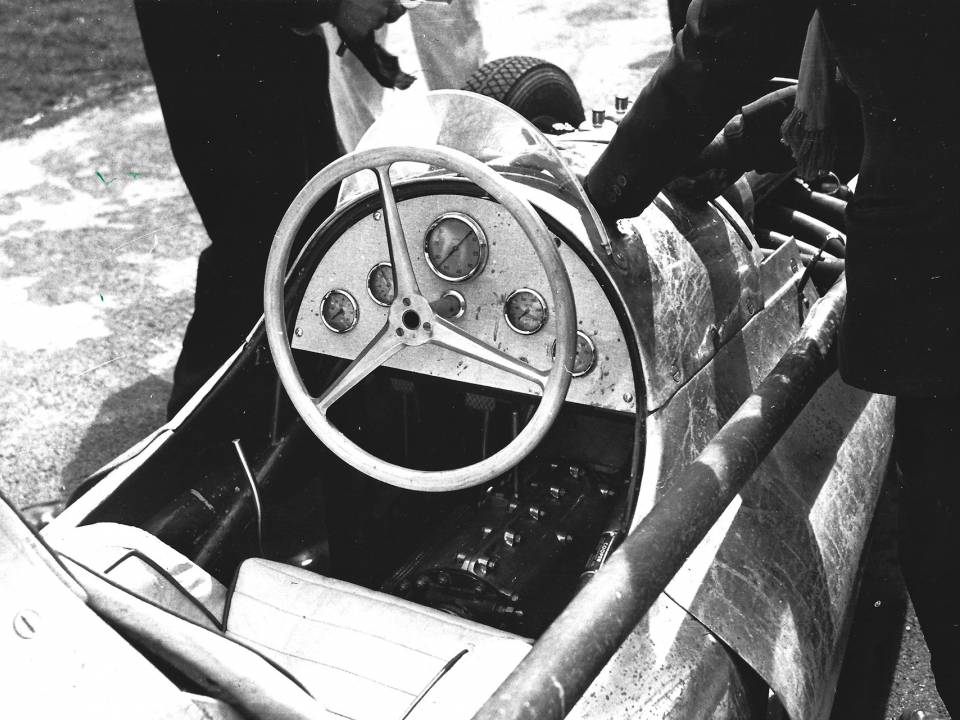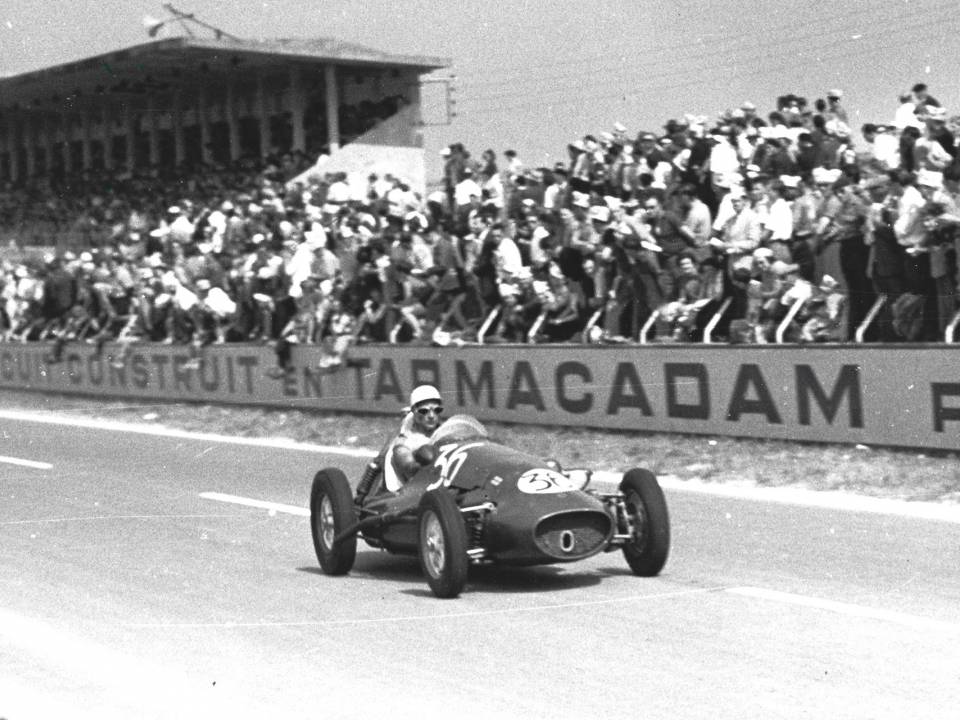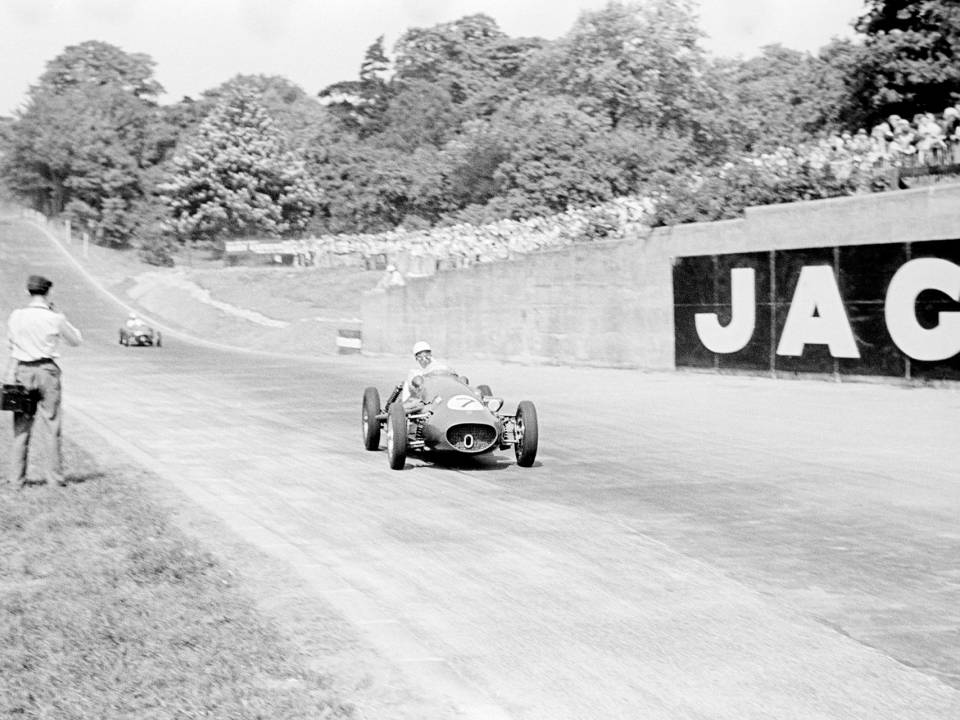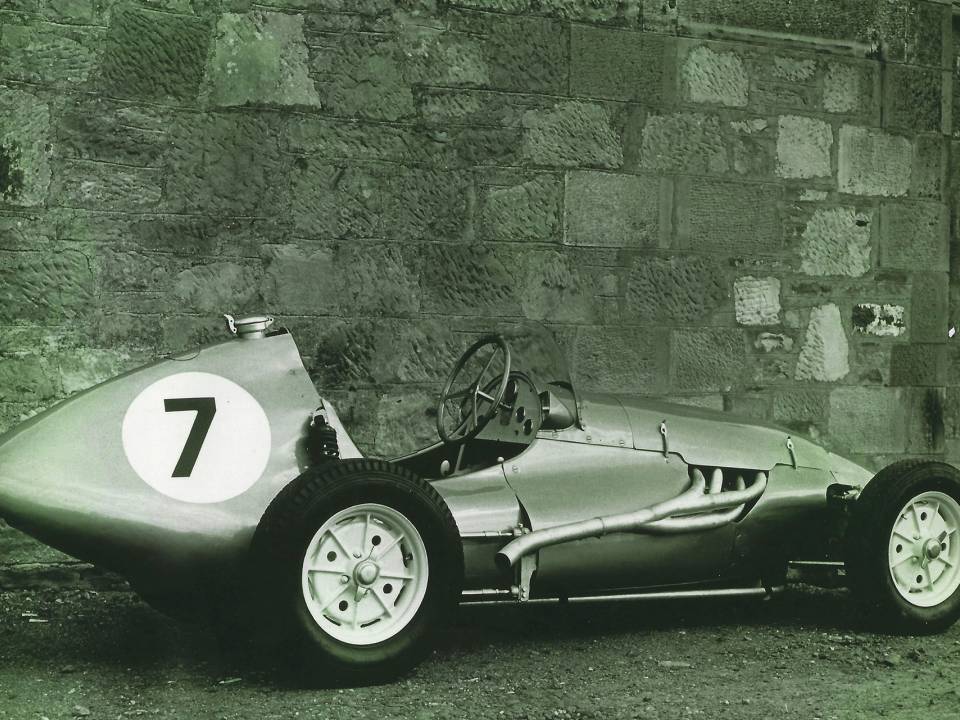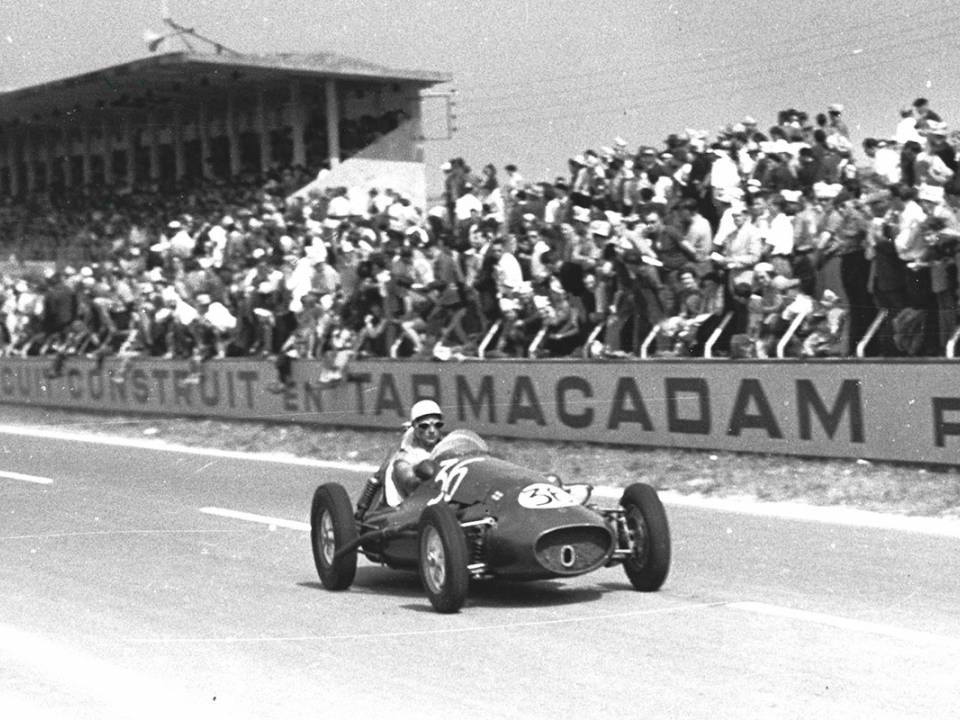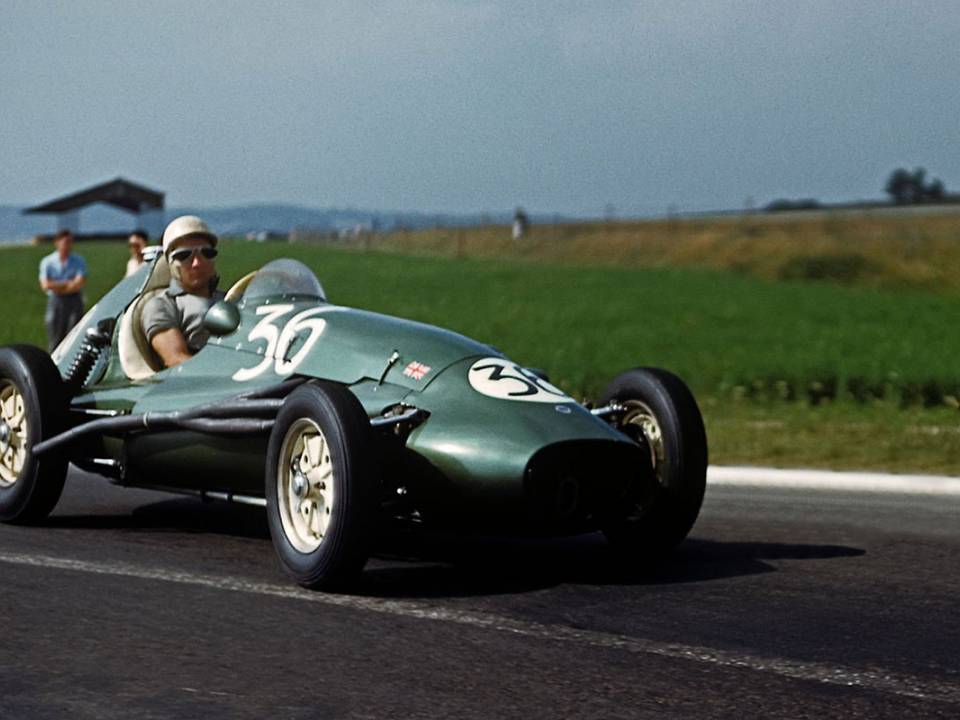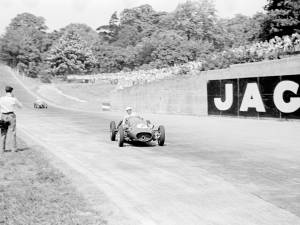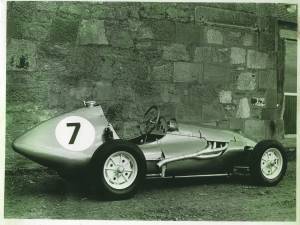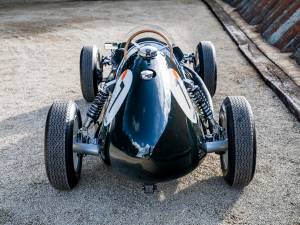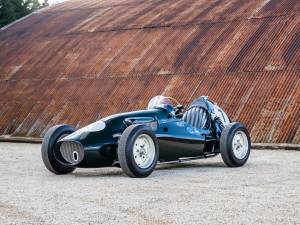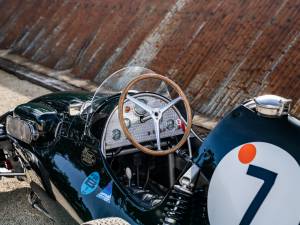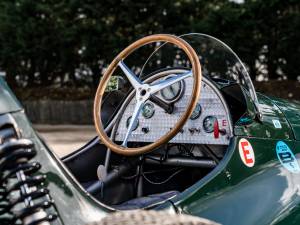1953 | Cooper Cooper-Bristol Mk II
THE STIRLING MOSS F2 CAR
THE STIRLING MOSS F2 CAR
THE STIRLING MOSS F2 CAR
Descripción
- Unique Formula 2 car built for Stirling Moss
- Raced by Moss during the 1953 season
- Campaigned extensively in historic racing
- Eligible for major events such as Monaco Historique and Goodwood Revival
As the 1953 season approached, 23-year-old Stirling Moss was already firmly established as one of motor racing’s rising stars. The ‘Boy Wonder’ had won the Tourist Trophy twice, was the dominant force in 500cc Formula 3, and had even demonstrated his peerless versatility by finishing second on the Monte-Carlo Rally.
One of his co-drivers on that gruelling event had been John Cooper, an engineer and Autocar journalist who is not to be confused with the John Cooper who built successful racing cars at Surbiton on the outskirts of London.
John ‘Autocar’ Cooper approached Moss in late 1952 and suggested that, along with Ray Martin and Alf Francis, they develop and build a single-seater to Formula 2 specification for Moss to race. His plan was to use a chassis supplied by John ‘Surbiton’ Cooper, but with modifications including front suspension that employed double wishbones and coil springs instead of the standard Cooper transverse leaf spring. There would also be Girling disc brakes up front, while at the rear was a de Dion tube with double radius rods on both sides, a Watt linkage, coil springs and inboard drum brakes.
Moss had initially suggested sourcing a 2-litre six-cylinder Maserati engine, but the Italian marque would sell them only a complete car. Instead, they approached British firm Alta and acquired one of its four-cylinder, twin-overhead-camshaft, 1970cc engines. This would run on twin Weber 45 DOE carburettors and be mated to a modified Alta gearbox.
It quickly became clear that the modifications specified by ‘Autocar’ Cooper were so extensive that it was easier to simply obtain the relevant tubing from Surbiton rather than a complete chassis. This would then be built up by Ray Martin and Alf Francis – and by now there was only 12 weeks to go before the car’s intended debut at Goodwood.
Despite the fact that it constituted almost a completely new car, Martin and Francis had the chassis ready after only eight weeks, and off it went to Cooper at Surbiton to receive its body panels. The engine, however, arrived with only 11 days left and was immediately found to be bigger than the dummy unit that the team had been sent.
In order to fit it in, they had to move the steering gear, which affected the geometry. Not until the early hours of race day – Monday 6 April – was the car finally lowered onto its wheels. They then discovered that it didn’t fit the transporter, but nonetheless it had been delivered to Goodwood by mid-morning.
Moss raced in the seven-lap Lavant Cup that day and, despite starting from the back of the grid, came through to finish seventh after a dice with Ken Wharton (Cooper-Bristol) and Bobby Baird (Ferrari).
The car’s next outing came in front of a huge crowd for the International Trophy at Silverstone on 9 May. Moss finished a close second in his heat behind the winning Maserati of ‘Toulo’ de Graffenried – the two men shared fastest lap – and then made a blistering start in the final. He briefly led before being overhauled by faster cars and was running sixth when a pit stop to take on more fuel dropped him to ninth at the finish.
Two weeks later, on 25 May, Moss and the Cooper-Alta Special were at the first post-war meeting to be held at the compact Crystal Palace circuit in south London. The Coronation Trophy comprised a 10-lap heat in which Moss finished fourth and then a 10-lap final in which he battled with Whitehead’s Cooper-Bristol before taking the chequered flag in fifth.
The ambitious little team then headed off to the continent and the Eifelrennen, one of the most prestigious non-championship races of the season. Held over the fearsome Nürburgring Nordschleife on 31 May, it attracted a strong entry from across Europe. De Graffenried won again in dreadful conditions, while Moss – who had won that weekend’s Formula 3 race – had to settle for sixth place after being held up in the early stages by the Ferrari of Kurt Adolff.
At the end of June, the Cooper-Alta was entered for the Grand Prix de Rouen-les-Essarts, a Formula 1 race that was also open to Formula 2 machinery and which was held on the majestic Normandy road circuit. Giuseppe Farina and Mike Hawthorn finished first and second for Ferrari, but Moss lost first gear on the opening lap and finished down in tenth place.
His final outing in the Cooper-Alta Special came a week later, on 5 July, in the French Grand Prix at Reims. As had been the case the previous year, the 1953 World Championship was for 2-litre Formula 2 machinery and the race around the high-speed circuit – which had recently been modified to bypass the village of Gueux – would be a battle royal between Ferrari and Maserati.
By the time Mike Hawthorn took a famous victory for Maranello, just pipping the Maserati of Juan Manuel Fangio, Moss had long since retired. The flywheel disintegrated and the clutch housing, as he later put it, ‘burst asunder’, resulting in a nasty gash on his leg.
The team then decided that the best way forward was to put an Alta engine in a standard Cooper chassis, and the Special was therefore retired from front-line competition. During 1954-55 it was used by Ferodo for brake testing, and in 1956 it took part in sand-racing in Jersey. There is also a photograph showing it back in England in 1957, when it was raced at a very wet Snetterton by a JS Read.
The Cooper-Alta Special later went into the Doune Motor Museum in Scotland, Lord Doune having acquired the car in late 1968. It stayed there for three decades until being bought by Bugatti specialist and historic racer Ivan Dutton.
John Lloyd then bought it from Dutton and, after a restoration carried out by Neil Davies Racing, the Cooper-Alta made its debut in historic racing at Brands Hatch in 2002. ‘The design has fantastic potential,’ said Davies at the time. ‘Almost straight out of the box at its Mallory first test it handled beautifully, and I reckon it can beat all the Cooper-Bristols.’
The car was entered for that year’s Monaco Grand Prix Historique and continued to race in historics with its next custodian, Dave Clewley, who bought it from Lloyd in 2007. Clewley, a well-known figure on the Vintage Sports-Car Club scene, went on to race the Cooper-Alta Special with the Historic Grand Prix Cars Association and at events such as the Goodwood Revival and the Nürburgring Oldtimer Grand Prix.
Now being offered for sale at The Classic Motor Hub, the Cooper-Alta Special is a fascinating chapter in the story of Stirling Moss – one of the greatest racing drivers of all time. The car has been signed by Moss and comes with current FIA HTP papers plus the original pointed tail section, dashboard and headrest.
A modified cylinder head that is said to offer a significant power increase is also included, and this unique piece of British motor racing history would be a welcome addition to the world’s most prestigious historic events.
Detalles del vehículo
Datos del vehículo
- Marca
- Cooper
- Serie del modelo
- Bristol
- Modelo
- Cooper-Bristol Mk II
- Código fabricante
- T23
- Primera fecha de registro
- No provisto
- Año de construcción
- 1953
- Kilometraje (leer)
- 0 mls
- Número de chasis
- No provisto
- Número de motor
- No provisto
- Número de la caja de cambios
- No provisto
- Coincidencia de números
- No
- No. de propietarios anteriores
- No provisto
Detalles técnicos
- Carrocería
- Racing car (Coche de carreras)
- Potencia (kW/CV)
- 110/150
- Capacidad cúbica (cm³) - acerca de
- 2000 (Fábrica: 1689)
- Cilindro
- 4
- Puertas
- No provisto
- Manejo
- Central
- Caja de cambios
- Manual
- Marchas
- 4
- Engranaje
- Trasero
- Freno delantero
- Disco
- Freno trasero
- Tambor
- Combustible
- Metanol
Configuración individual
- Color exterior
- Verde
- Color interior
- Negro
- Material interior
- Cuero
Condición, registro y documentación.
- Condición
- Restaurado
- Tiene peritaje
- No provisto
- Condición
- Informe de inspección del libro
- Matriculado
- Listo para conducir
- FIVA
- FIA
Ubicación

The Classic Motor Hub
Sales Team
Appointment Only
GL7 5NX Bibury
🇬🇧 Reino Unido
